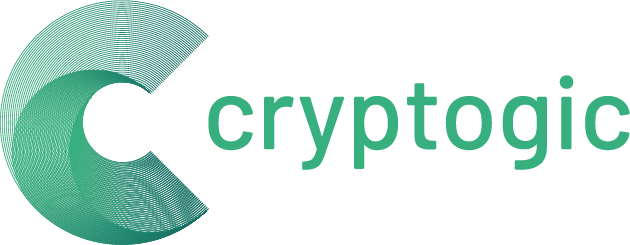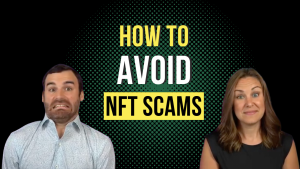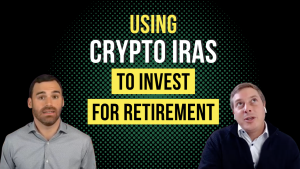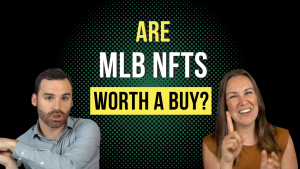Cryptogic provides tools, information, and commentary focused especially on cryptocurrencies, financial and cryptocurrency markets, economic trends, and trading strategies; these tools, information, and commentary are provided for general information purposes only. Neither Cryptogic nor any of its owners or employees are financial planners, investment advisors, or broker-dealers in any jurisdiction. Cryptogic does not provide investment advice, investment services, legal advice, legal services, tax advice, or tax services. Cryptogic does not contain, or constitute, and should not be interpreted as legal advice or opinion. Cryptogic is not a substitute for professional investment advice, tax preparation or legal advice. Consult an investment, tax or legal professional for specific advice about your situation. Click here to read our Website Terms of Use.
Simple Steps To Earning Yield Via DeFi, With Brad Yasar
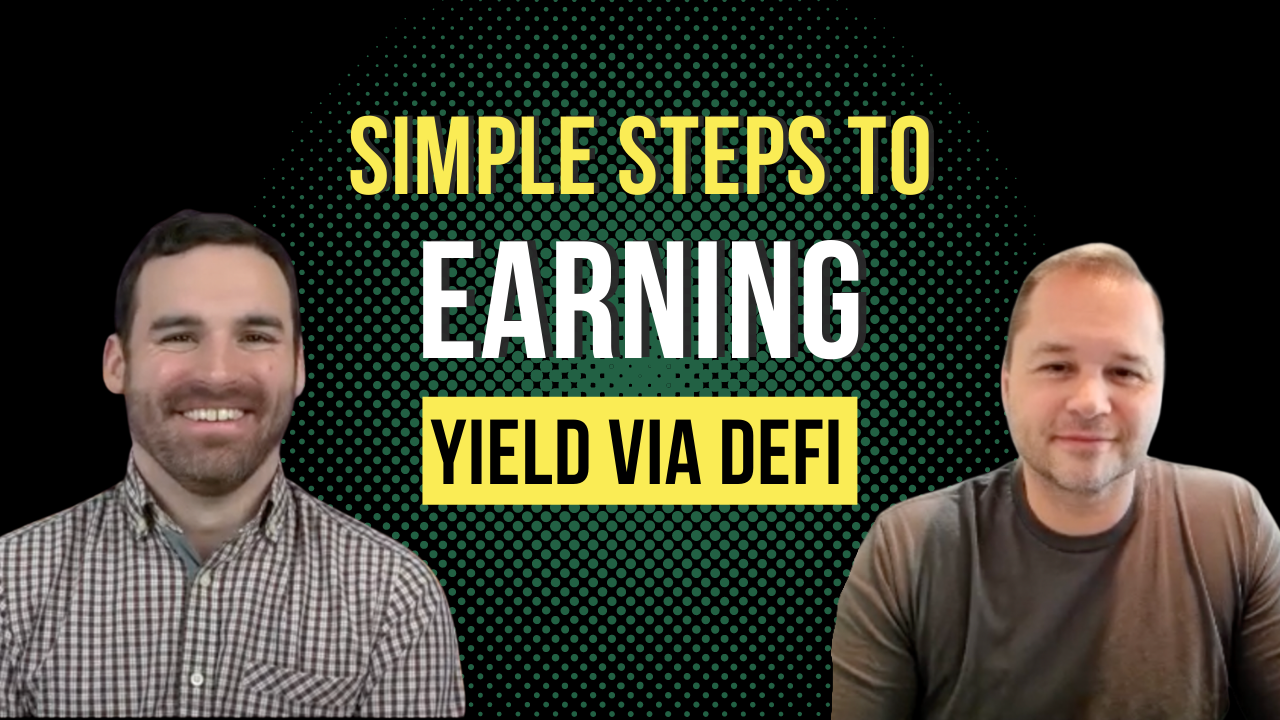
The ability to earn yield has been a tremendous innovation for crypto investors and traders. Still, it’s not without its challenges and risks (especially for those newer to it). How can it be made simpler? Brad Yasar, CEO and co-founder of EQIFI, joins the show to discuss.
EQIFI is a decentralized finance (DeFi) investment platform, listed on the Bloomberg and Nasdaq terminals that is growing in mainstream adoption, and opening up DeFi to a broader pool of investors across mainstream financial and retail backgrounds. Listen along for Brad’s unique insights.
Watch On YouTube
Episode Highlights
Decentralized Finance, Simplified: “Earn, borrow, and pay with crypto, easily and securely. EQIFi is the only decentralized finance platform backed by a leading digital bank.” (EQIFI)
What Is Yield Farming? What You Need To Know: “Yield farming allows investors to earn yield by putting coins or tokens in a decentralized application, or dApp. Examples of dApps include crypto wallets, DEXs, decentralized social media and more. Yield farmers generally use decentralized exchanges (DEXs) to lend, borrow or stake coins to earn interest and speculate on price swings. Yield farming across DeFi is facilitated by smart contracts — pieces of code that automate financial agreements between two or more parties.” (Blockworks)
Today’s Guest: Brad Yasar, EQIFI
About The Show
Cryptogic is the show for crypto investors who are focused on long term results. Follow Scott and Andy as they explore the investable world of blockchain technology, NFTs, Bitcoin, Ethereum, and other cryptocurrencies.
Connect With Cryptogic
- Watch Cryptogic on YouTube
- Listen to Cryptogic on Apple Podcasts
- Listen to Cryptogic on Google Podcasts
- Listen to Cryptogic on Spotify
- Follow Cryptogic on Twitter
Transcript
Scott: Hello, and welcome to another episode of Cryptogic. Scott with you. And really looking forward to today’s episode because we’re going to be diving into the world of DeFi, earning yield, and a whole lot more. And joining me to offer insight on all of that is Brad Yasar, who is the CEO and co-founder of EQIFI.
And what is EQIFI? EQIFI is a decentralized finance, DeFi investment platform that’s listed on the Bloomberg and NASDAQ terminals and it’s growing in mainstream adoption and opening up DeFi to really a broader pool of investors across mainstream financial and retail backgrounds.
And as the CEO and co-founder, Brad has a lot of great insight to share with us today on DeFi. So, we’re so lucky to have him. Brad, welcome to the show.
Brad: Thank you for having me, Scott.
Scott: Well, thank you for being here. As I said, we want to talk about DeFi, Decentralized Finance platforms for investors. And we’re going to specifically learn a bit more about EQIFI, your platform. But before diving into that, I was hoping you could set the stage a bit for us and really answer a big question.
Why is DeFi so powerful for investors holding crypto assets in general?
Brad: Well, DeFi is very powerful for everyone, even the investors who are not holding any crypto assets. If you look at the evolution of financial services and products, the underlying premise of a financial service is to create value for the user.
So, whether it’s a banking service that secures your wealth or an investment service that increases it, there always has to be some underlying value increase for the user for them to say, “Here, take my money. Take my funds. Take my investments and use them for whatever purpose you’re going to use them.”
So, DeFi is very unique and innovative in a way that it creates wider access for people with or without crypto. Why is it really important for people with crypto? It’s because since the beginning, the value created in crypto has been a little disconnected from traditional markets.
Only a few years ago, you started being able to borrow against your Bitcoin and against your Ethereum. Only just a few years ago you started being able to deploy crypto and crypto products, decentralized financial products, and earn something with it. So, it’s a game-changer in a way that before, before DeFi, before the innovation and release of these products, we could only hope that the crypto we hold is a passive asset we hold on to it.
And at certain points where if there’s enough appreciation, we can go and sell some of it and realize some gains. So, as an investor, crypto initially was just a speculative alternative asset, and then it turned into, with the DeFi platforms launching and these DeFi products allowing you to use the crypto in its native form and not necessarily trade it for a fiat currency to realize gains.
It became an asset that generates passive income. So, that’s, again, a paradigm shift from a speculative asset to a long-term investment asset with passive returns on it. The other side is, of course, people who don’t have crypto and they were using fiat currency and, you know, earning an interest on that.
And in the past few decades, they saw that interest dwindled to almost nothing if not negative figures. I am not that old, but I remember opening up bank accounts where the checking account had 5% interest on it. So, nothing special, not a CD, not an investment account, a checking account that holds your money had interest on, and decent interest.
Fast forward to 2022, if you can find a checking account with 5% interest on it, please let me know because it doesn’t exist anymore. So, even for the people who don’t have any crypto, DeFi is a paradigm shift as well because now they can look into a financial product that’s going to return them some value that’s going to have a positive ROI.
And that’s, again, very important because so far the liquidity of a DeFi platform or a product and the returns on it don’t exist in the traditional markets. And people need that.
Scott: I think you have broken it all down so well and really set the stage. I think there is just so much power in DeFi and especially when we’re talking about earning yield which we’re going to dive into a bit later here. But before going forward, I’d love to hear a little bit more about the story behind your specific DeFi platform, EQIFI.
How can it be used by investors who are looking to earn yield for their digital assets?
Brad: Well, our platform was born out of two needs, our banking clients needed interest rates that are higher than zero, so there was a lot of interest on the banking side of the business from clients that were asking for opportunities, what can we provide.
And on the DeFi side, we had a lot of clients that needed supportive banking solutions because they create a lot of wealth, and then that wealth is locked in their DeFi project or crypto project.
And they can’t even go buy a new car, they can’t even go buy a house with it. Although the value creation is there, it’s disconnected from the traditional banking rails and traditional loans and things like that. So, we wanted to create EQIFI to bring the two worlds together. We wanted to bring banking and DeFi together and provide this service seamlessly under one platform to everyone who needs it, which is pretty much the entire world population.
Everyone wants that passive income. Everyone wants to have positive yield on their savings. So, how our platform works is we bring everything together under one platform, very easy to use. We’re a licensed and regulated bank and we’re a licensed and regulated DeFi platform.
So, for us, the most important thing was to be transparent, show people that although there may be some news around DeFi that’s not positive and some concerns and they may be concerned about their banking relationships, there is an entity out there that has DeFi and CeFi, Centralized Finance, together and that can serve them.
So, the investors can come to the platform, they can open bank accounts with their fiat currencies, they can take traditional loans out, they can have the cards they need, credit, debit. But they can also put their digital assets into use. So, you know, there are a lot of bank clients that have kind of tried getting into crypto a little bit, but the extent of their involvement with crypto has been, “I’m going to buy and hold because I don’t know what’s going on and I want to have the exposure, but that’s what I’m comfortable with.”
Now, there are other DeFi protocols that are not powered by a bank that may not be licensed at the level we are and that are not transparent. You can’t reach the CEO. The team members are avatars on the website with random names that don’t really reflect their real names.
That doesn’t instill confidence in more traditional-minded people, less technical people to put anything in those platforms either their dollars, pounds, euros, or there’s Bitcoin and Ethereum. With EQIFI, we wanted to change that. So, we’re fully licensed and regulated, 100% transparent, and we want to bring that confidence that you can have a platform where not only you receive the traditional services you want, but also put your crypto to use.
And using the platform is super simple. On eqifi.com, you go and you create an account. It takes 30 seconds. You connect your MetaMask wallet to it with your crypto and it takes another 15 seconds. So, under a minute you can deploy some capital into our yield aggregator and start earning market-rate yields with that platform without knowing anything about crypto, without knowing anything about liquidity pools or knowing anything about the underlying asset pairs that you’re investing in because our software of our platform does it for you.
Scott: Wow. I mean, that’s so powerful. And a couple of questions. First, you mentioned MetaMask. Is MetaMask the only wallet you’re currently working with or there are others?
Brad: Right now we’re working with MetaMask and we’re adding a couple more very soon. And of course, the ultimate goal is to have no wallets attached, make that all integrated into the platform. So, in Q2, we’re going to deploy an internal wallet. So, if someone comes in with a fiat currency and wants to use the yield aggregator, they don’t have to figure out how to buy Ethereum or Bitcoin or, you know, USDC.
They go, they plug in, and they can use the product. Our mission is to simplify everything, every good, interesting, exciting thing that’s happening in DeFi and bring it to the masses. We’re not here to compete with other DeFi protocols, platforms, or, you know, go after their audiences.
We want to open this up. We want to be the bridge to a larger audience and grow the crypto market cap.
Scott: You know, Brad, I think that’s such a powerful mission. And I want to dive in a bit to the yield aggregator because that’s something when it comes to DeFi, you know, someone who’s newer to all of it, maybe doesn’t have a super technical background, they’ll hear all of this exciting, they’ll hear these stories of, “Oh, I’m farming yield. And look at this, I’m using leverage and I’m doing all of this. And look at this yield percentage. It’s crazy.”
And one of the challenges is that there’s this sort of learning curve to that. And anytime you’re kind of building leverage and you’re transferring between cryptocurrencies and you’re doing all of that, you can get over-leveraged, you could lose your shirt, lose it all because there are people that are out there doing this and they’re really sophisticated. So, what you’re saying is what EQIFI has is this yield aggregator and you’re saying you put it in there and you don’t have to worry about it.
Can you, I guess, tease out a bit more, what’s happening with the yield aggregator? What’s the story behind that? And how does that really help, I guess, bridge that gap between someone who’s maybe an expert and someone who just needs greater access to this and maybe doesn’t have all that technical background or the time to really farm that yield actively?
Brad: Well, excellent question. And you actually missed a very important point in there I’m going to add to your question. And it’s the time commitment. Whether you’re an expert or a novice who just got into crypto, even at the expert level, it takes a lot of time.
The background story of yield aggregator is, I was placing some funds in different liquidity pools and I realized after doing it for a couple of months that I’m spending two, three hours a day doing it. I would consider myself, you know, a very comfortable DeFi user and an experienced one. But it was such a time commitment to research what liquidity pools, what pairs are the best?
How are they returning? How are the fees? How to benefit from it? Then switch from different blockchains to others in different crypto assets to the others and calculate the fees that you’re going to incur just doing that switch. It was becoming almost a full-time job.
So, our yield aggregator is a result of that frustration with the opportunities that exist out there in the market and the time commitment needed to find them and make the best out of them. And yield aggregator is our crown jewel. What we did is we automated the process that I was going through every day looking at different parameters, different risk factors for each pool like age of the pool, number of wallets connected to it, the length of, you know, commitments in the LP pool, things like that, and automated it so now we have a smart contract that checks the blockchain every day.
It looks at the pools, looks at which are the highest returning, which are better suited for our needs because we don’t go after high-risk assets and highly volatile assets. And then create a portfolio structure. That’s the best of both worlds. Lowest possible risk exposure with highest returns.
And by automating this, we opened it up to newcomers into crypto who may not really know what a liquidity pool is or what, you know, LP token is or how to use a Dex and how to deploy capital. So, we wanted to simplify it both for people who are not technically savvy or DeFi savvy, but also for the experts who may be spending hours and hours that they can use for other things.
If there’s a yield aggregator that you trust that you know is going to do a better job than you doing it manually, it becomes a no-brainer. You put your crypto there, you see the returns, you monitor the markets, and it’s a win-win situation because now whether you had a lot of information and experience or you just started, it levels the playing field.
Everyone gets the same return because it’s a programmatic approach.
Scott: I mean, that is so powerful. And I want to dial in on something that you mentioned there. So, really, are you saying that, I guess, the risk mitigation is built into the aggregator tools? So, you’re… I guess a lot of folks are concerned about risk. And what you’ve done is say, “How can we have the lowest risk we can possibly, I guess, you know, calculate, but also get the highest yield kind of meeting both of those and not getting too risky on there?”
That’s built-in?
Brad: Absolutely. So, what happens is whether you are a seasoned DeFi user or a newcomer, you see these projects and they promise you 4,000% APY. Now, any logical person would question that to a certain extent, but then the lottery mentality kicks in, right?
We’re all prone to “What if it works?” Like the what-if that pops up.
Scott: That emotion.
Brad: Yes. Yes. We’re emotional creatures and it’s not always logical. So, until you get burned 3, 4, 10 times, you still get excited about those. We wanted to eliminate those from the conversation, especially for newcomers because when someone gets into crypto, they buy a little bit of crypto assets, then when they get into DeFi, they deploy those assets.
And we want both those experiences to be positive for them to develop this affinity and believe in the future that’s decentralized and that we’re building. If the first time they buy 100, I don’t know, Ethereum, 10 Ethereum, and then they put it into DeFi, they lose all of it.
Guess what? Now, not only they lost a portion of their savings, hopefully, a portion, but also they have a bad taste in their mouth. So, they start thinking all of crypto is a scam.
Scott: Right.
Brad: I got scammed. I lost my money. It’s very difficult to recover from that. I know so many people who could be incredible contributors to the space, but because they had one or two really negative experiences, they don’t want to touch it anymore. And that’s a loss because that’s their loss because now they’re not exposed to this amazing fast-moving opportunity in the world.
But it’s also a loss for the crypto community because now there’s two less people in it that could have been evangelizing it. So, what we try to do is we try to create a safe entry point where you’re not going to get 4,000% APY because that’s not sustainable or realistic, but also you’re not going to get a negative interest rate like your bank account.
So, we manage risk and the ROI that we can give in a way that it’s still an incredible opportunity for traditional finance product users. And it’s a great opportunity for DeFi users. Now, if someone more experienced wants to monitor a liquidity pool that’s paying 1,000% APY because they think they know what they’re doing and they can get out in time before it becomes unresponsive, that’s their call.
We’re not against that. But if they want to have something that’s reliable and long-term, again, our yield aggregator, EQIFI’s yield aggregator, it is the product you’re looking for.
Scott: Absolutely. I guess I’m curious. One of the… You’re talking about accessibility. I think mainstream adoption is something that whether you’re talking about cryptocurrency specifically in use in payments, or whether you’re talking about it, like what we’re discussing, DeFi and yield and all of these exciting things, getting folks to adopt it is such a critical mission point.
I’m curious your thoughts to let’s say this continues to be successful, more and more folks are adopting cryptocurrency and earning yield, they’re using the EQIFI platform or whatever platform of choice that gives them great access. What do you see happening in the future and how that may impact DeFi yields, liquidity pools? I guess, what might the impact be how it might change as more and more folks adopt decentralized finance?
Brad: Well, I think it’s going to mature, right? So, right now it’s a very small subset of world population that has crypto to begin with. And then a smaller subset of that actually uses DeFi platforms and protocols. So, if we were to 10X that, let’s assume, you know, 10 times more people have crypto which is possible.
That’s just 1 billion people or 2 billion right now. And 10 times more people use DeFi, that’s going to create an incredible economy for the DeFi space because now you’re going to have numbers that match traditional finance in decentralized finance.
And if we do it right, the returns are still going to be positive, the opportunities are still going to be better. So, what I can see happening is traditional financial players are going to start adopting these products and services. Sooner or later, your bank is going to realize that they need to create a liquidity pool.
Maybe their liquidity pool is not going to be a stable coin liquidity pool or an Ethereum liquidity pool. Maybe their liquidity pool is going to be something else. Maybe it’s going to be a fiat liquidity pool with a central bank digital currency. Who knows? But more and more institutions in banking and finance are going to start adopting this, which is great because my vision, my goal is to bring these products to more people and not leave 2 billion people who are left out of banking and finance today, traditional banking and finance because they can’t get ID because they were born in the wrong part of the world, whatever it may be.
I want to bring those people into the ecosystem. And as more traditional partners, traditional players adopt decentralized mindsets, they’re going to also be able to provide services to a larger group of people. The reason why a lot of people are cut out of our financial systems and banking systems is basically the cost of it, right?
So, if it costs me, as a traditional bank, and I’m making these numbers, $5,000 to originate a loan, guess what, I’m not going to do loans less than $5,000 because it’s my costs. Like, I don’t want to lose money. It’s not discrimination by design. It’s discrimination by economics, unfortunately, because their overhead is so high up here that certain products and services they can’t provide it to people.
And those people suffer as a result. I mean, can you imagine not having a bank card, having to carry cash everywhere? It’s just… It shouldn’t be the case at this day and age. With digital currencies and crypto, we are changing that. And with DeFi, we can even innovate the underlying systems so that everyone can participate in different ways, of course, but everyone can participate.
So, I see DeFi affecting traditional banking and finance in a very positive way and accelerate adoption and accelerate access to these products on a global level.
Scott: Exactly. And from the investor side that can only, you know, be a positive thing if there’s greater adoption, greater access that certainly can create more innovation and more opportunity there.
Brad: Absolutely. I mean, on an investor side although DeFi started in 2017, it’s an incredible early stage proposition right now if you want to get into DeFi at an investor level, not just as a user, I’m going to, you know, put my crypto into EQIFI and earn 70% APY or things like that.
If you’re looking into “How do I invest in DeFi?” now is an incredible opportunity because the projects that are launching in success are going to become multi, multi-billion-dollar projects. And eventually, we’re going to start seeing trillion-dollar projects in DeFi as early as five years from now because they touch so many different areas of finance, they touch investments, they touch banking, they touch money transmission, they touch, you know, cross-border transfers.
I mean, it’s just an incredible opportunity to find out good projects like EQIFI at this stage and get into them because, you know, once everyone adopts it, who knows who’s going to come up top? It could be a traditional bank, it could be something that was launched last year. I mean, you don’t know.
Scott: You know, Brad, I love that you really put a fine point on that because always when I discuss cryptocurrency, DeFi, my investment thesis really focuses on two elements. You have, you know, the digital assets themselves, the tokens, what have you, but then you have the underlying technologies, which continue to improve and there is so much motivation to develop them and solve maybe some of the remaining challenges, have transactions, you know, settle more quickly, whatever, have greater volume on the blockchain.
Whatever those challenges may be, there is so much interest in having that solved. And investors, whether it’s the digital assets or, you know, investing in the underlying project, that’s where just a tremendous amount of opportunity for return is created, right?
Brad: Absolutely.
Scott: Brad, I want to thank you so, so much for joining me on the show today, really sharing the story behind EQIFI, the exciting things that you guys are doing, and really increasing that accessibility and that mainstreaming that I think wherever folks are on the cryptocurrency spectrum, on the DeFi spectrum, it’s a win for all involved with folks like yourself working on this.
And if our listeners want to find out more, maybe sign up, maybe start earning some yield, where can they do that? Where should they go?
Brad: The best place is our website. If they can go to eqifi.com, that’s eqifi.com, they can sign up for the platform. They can find all our social media channels to connect with us, talk to us. And like I said in under a minute, if they have a MetaMask wallet right now, they can be earning really nice return on their crypto just with a few clicks.
Scott: That’s fantastic. Thanks again so much, Brad.
Brad: Thank you for having me, Scott.
